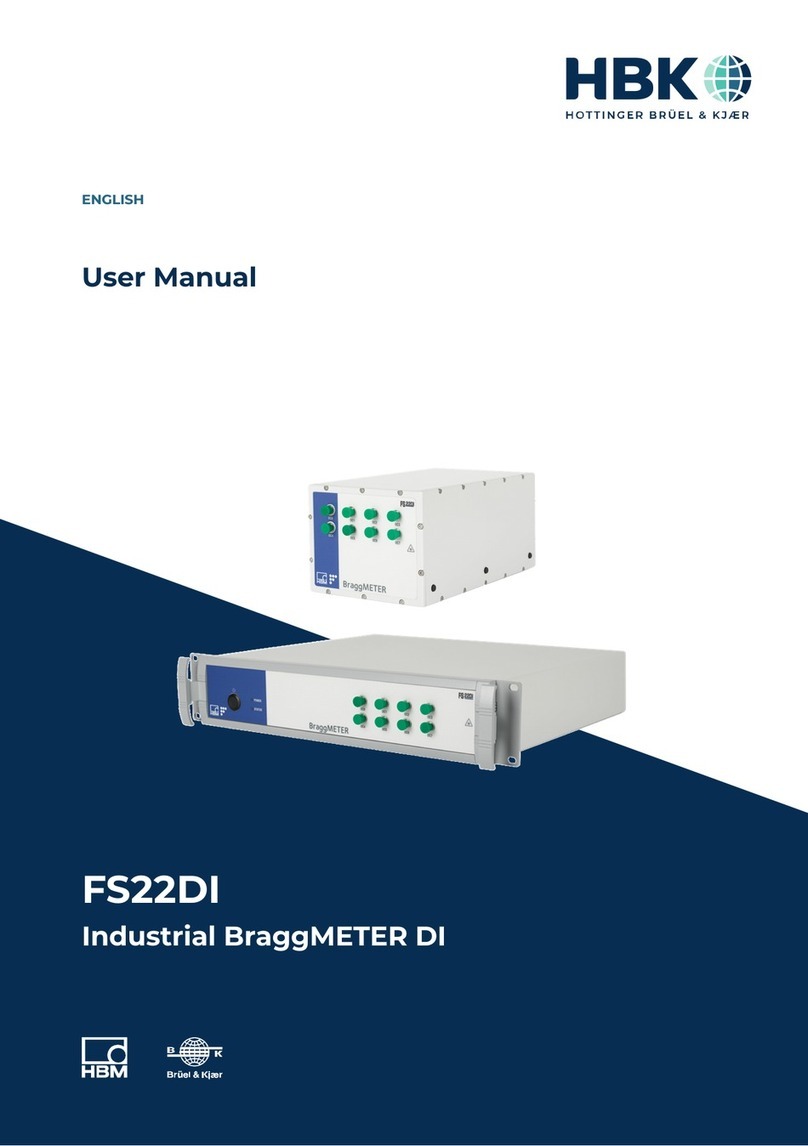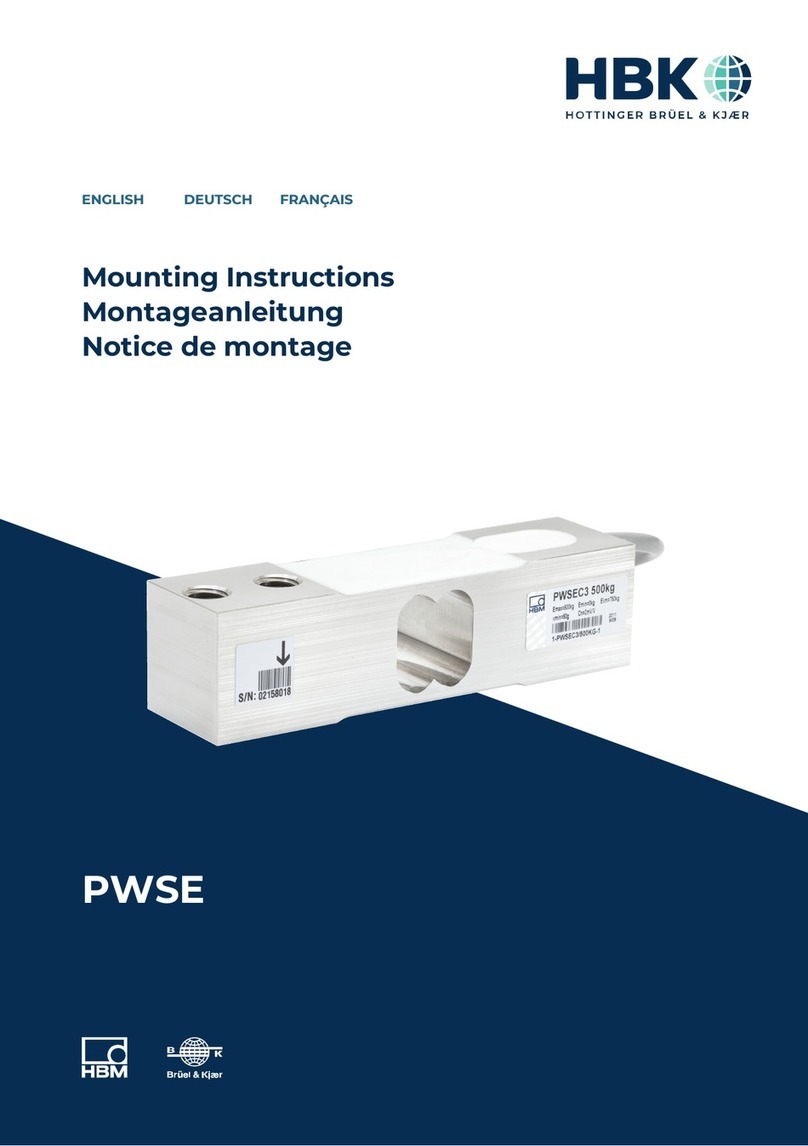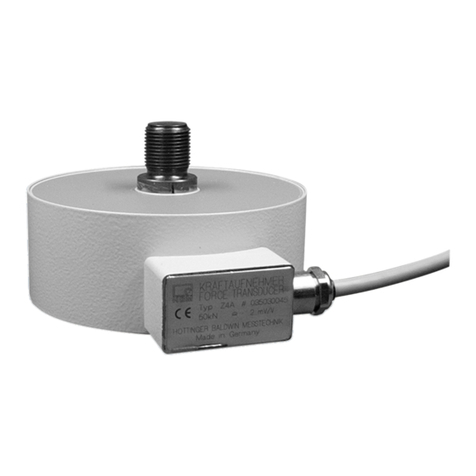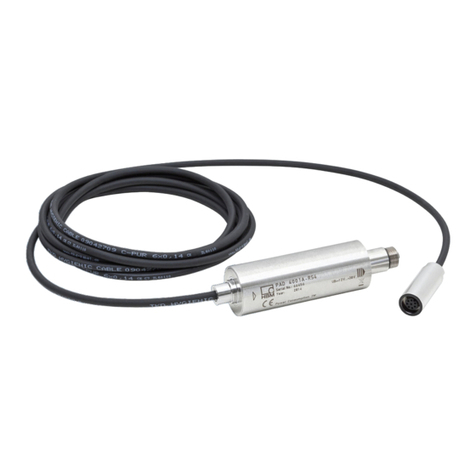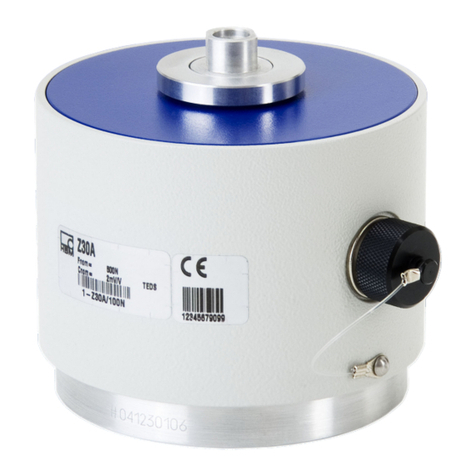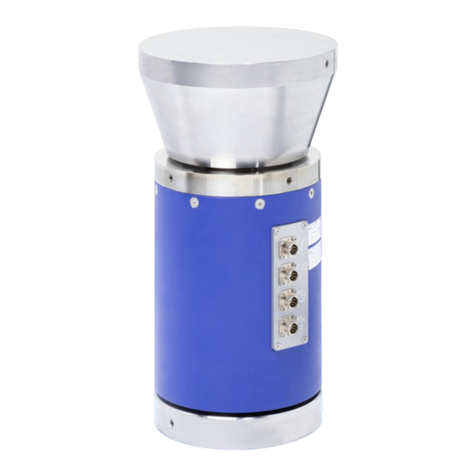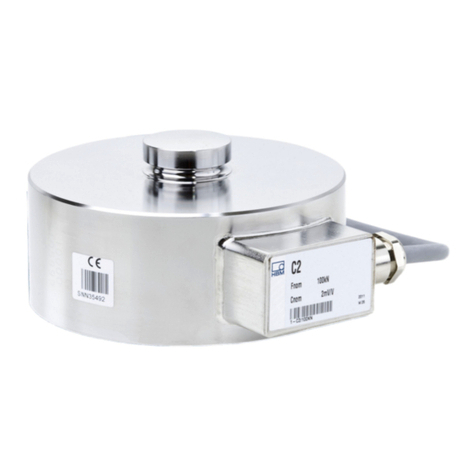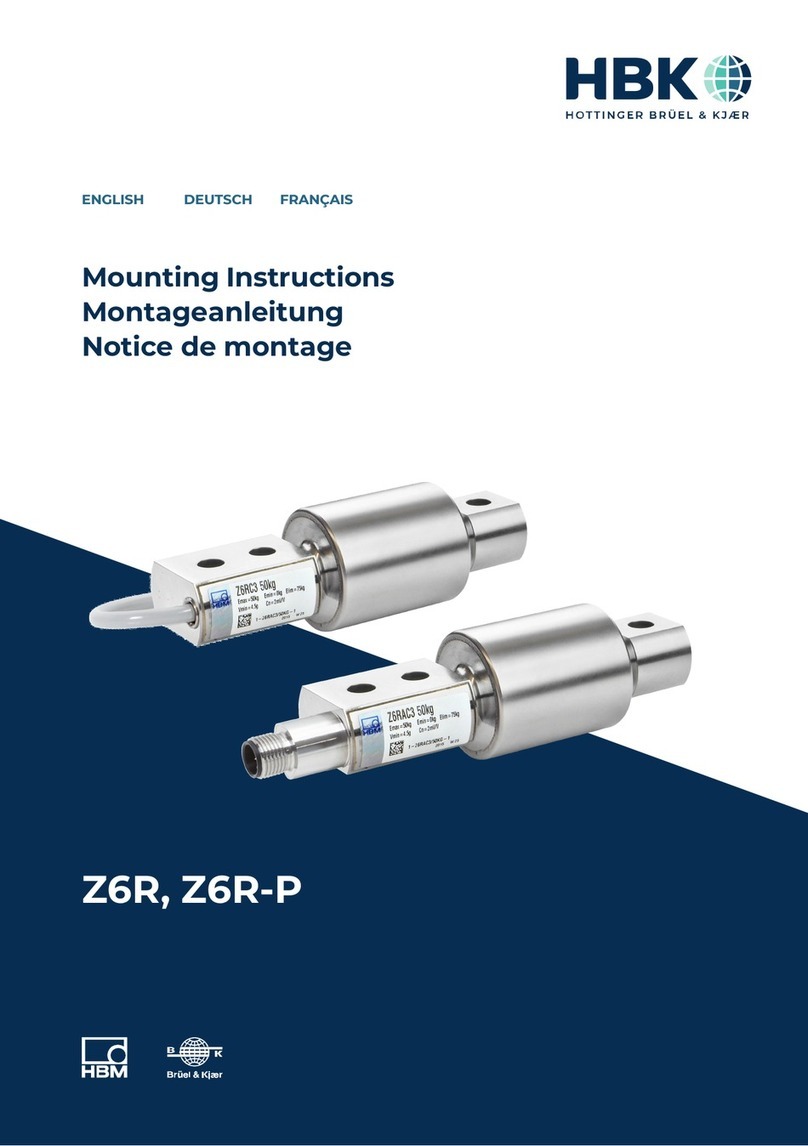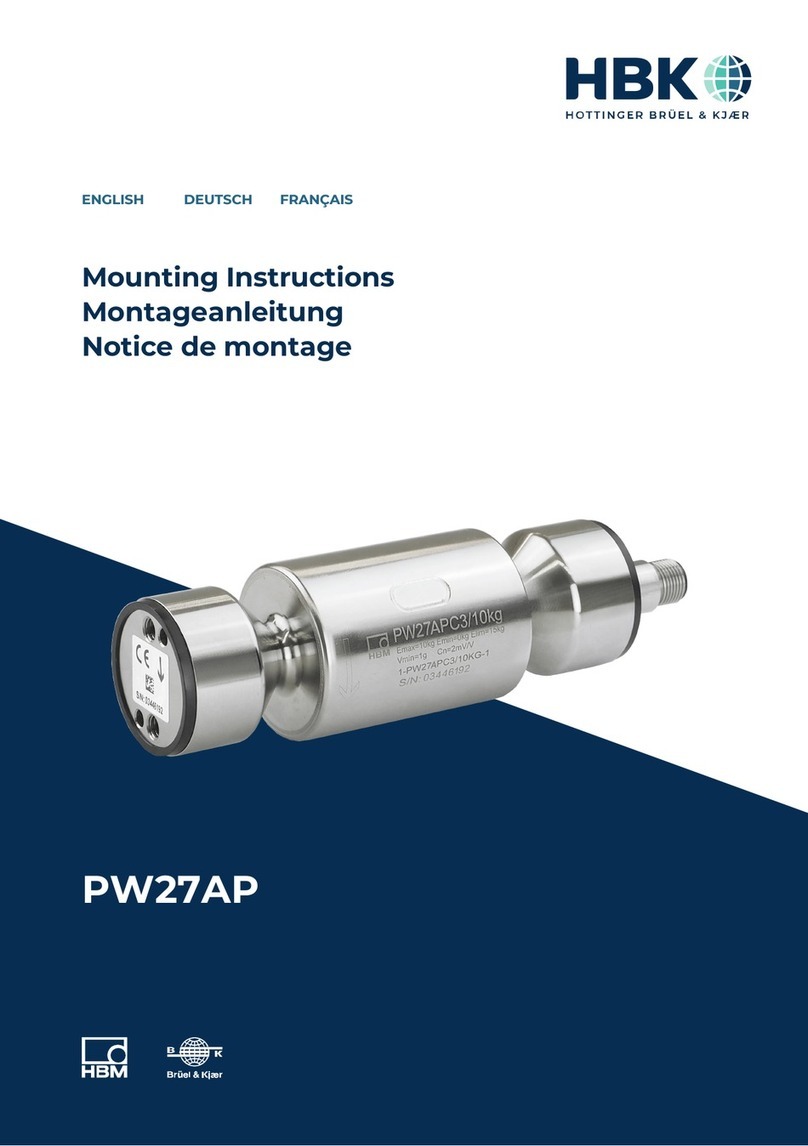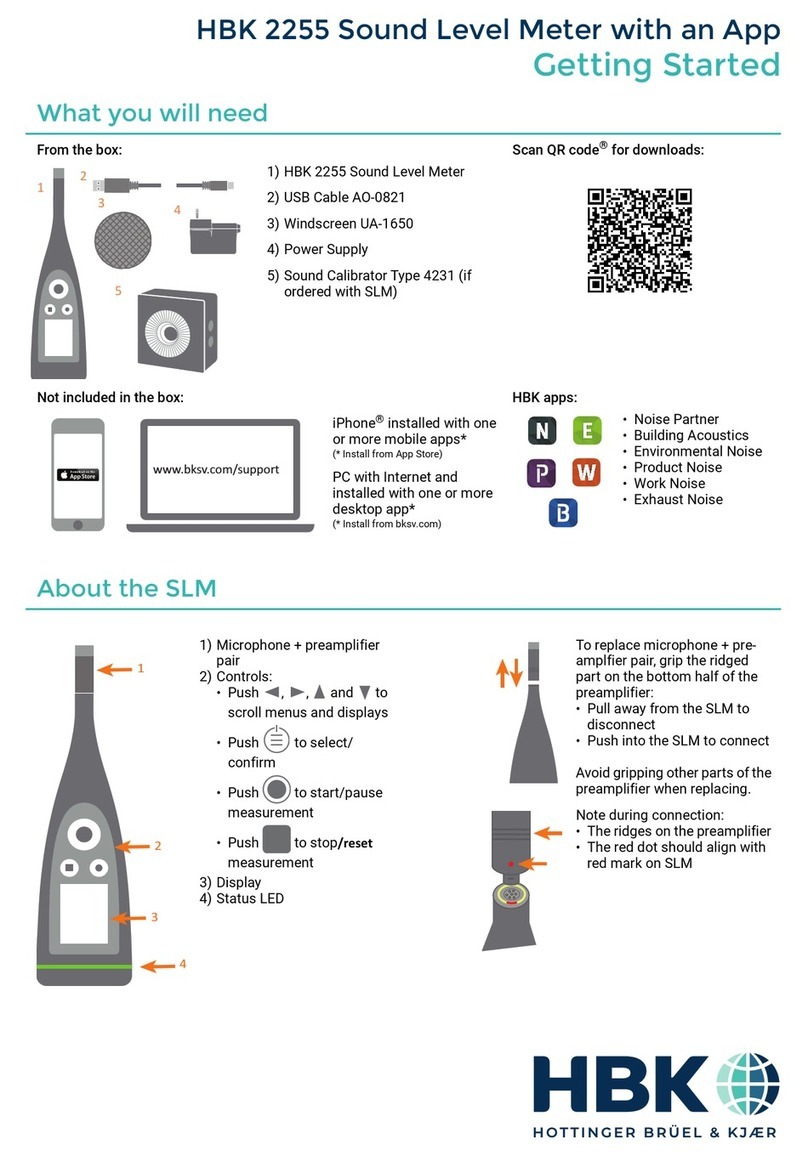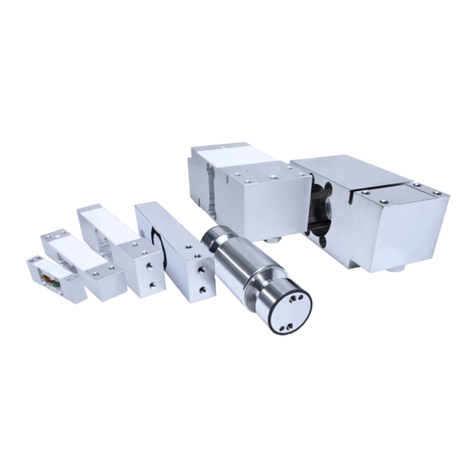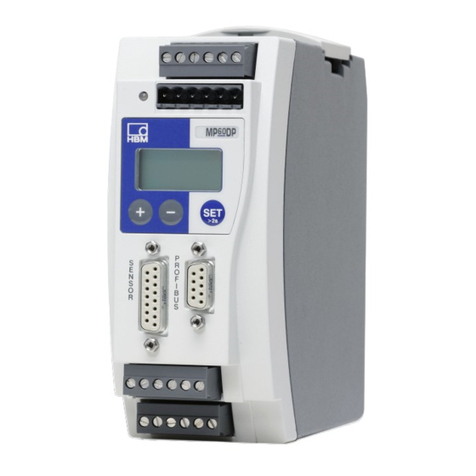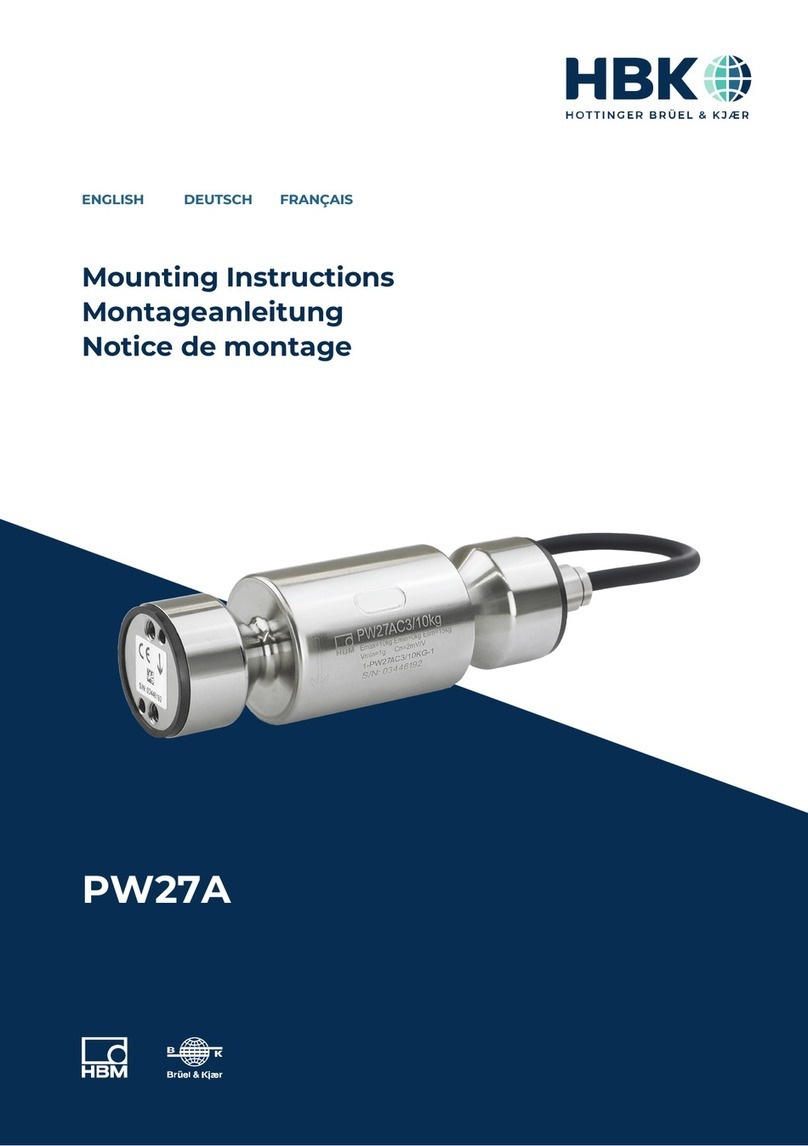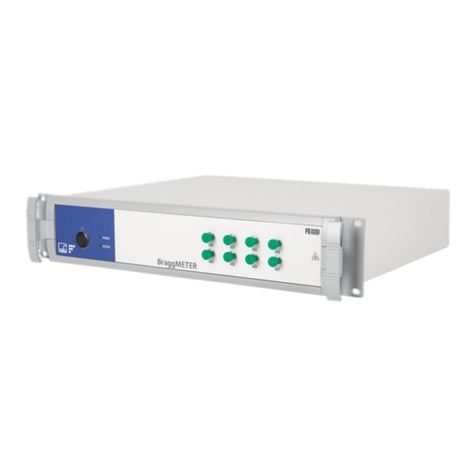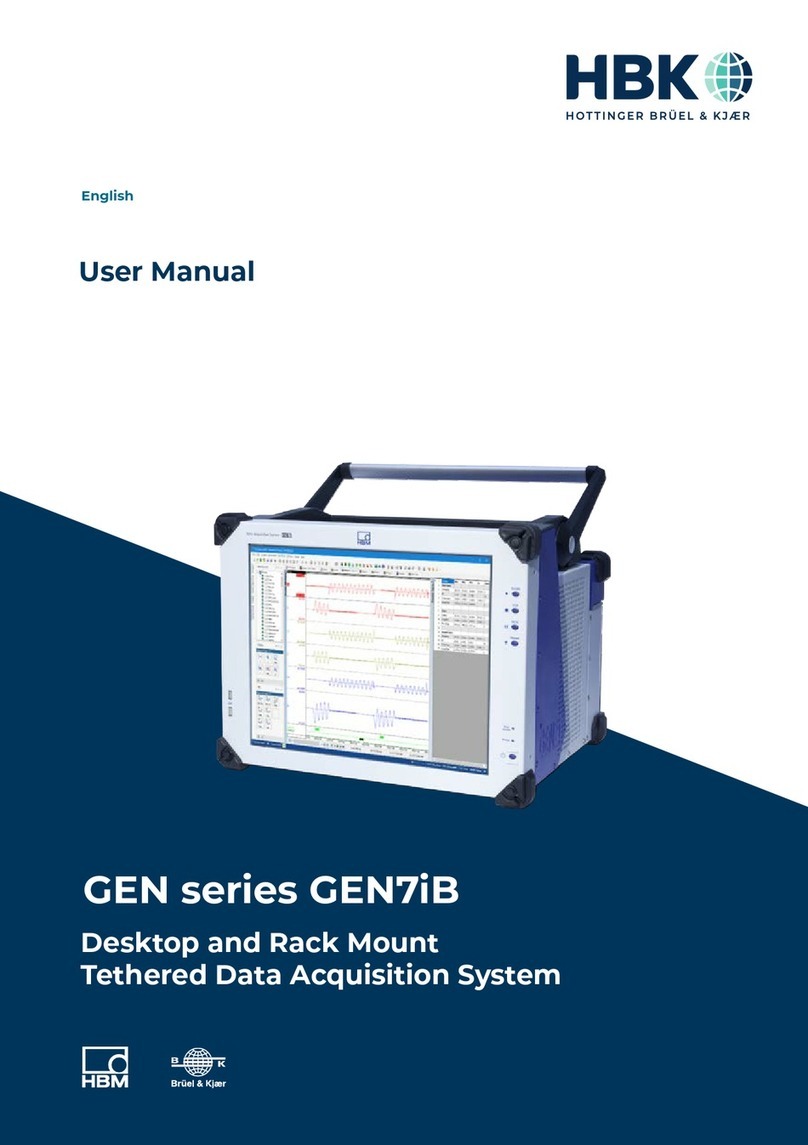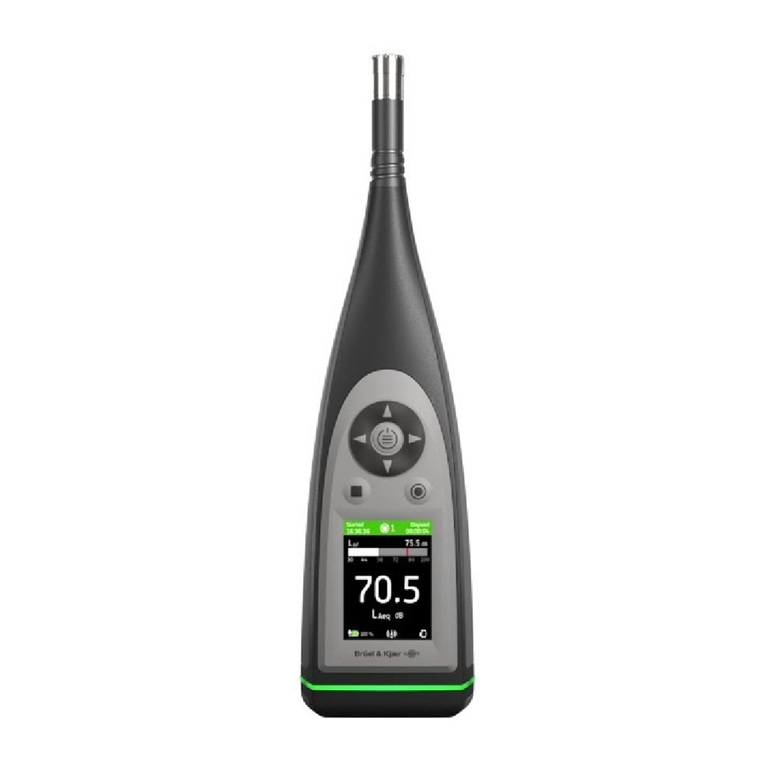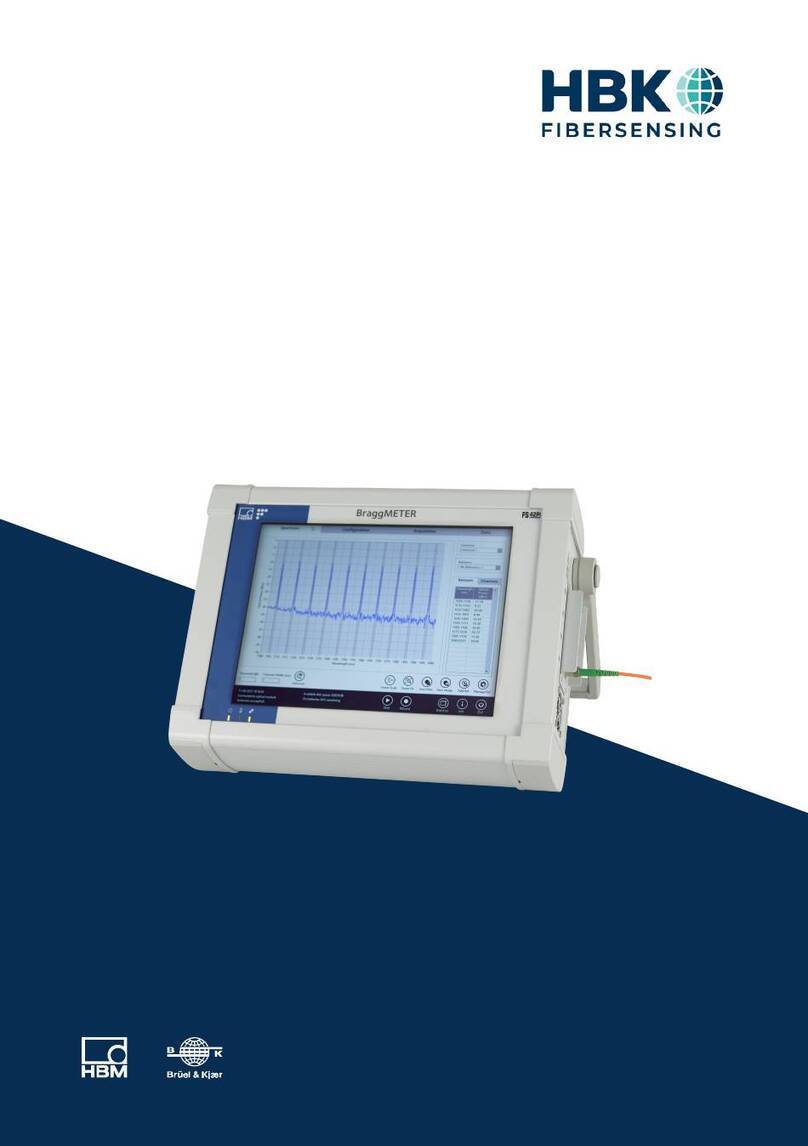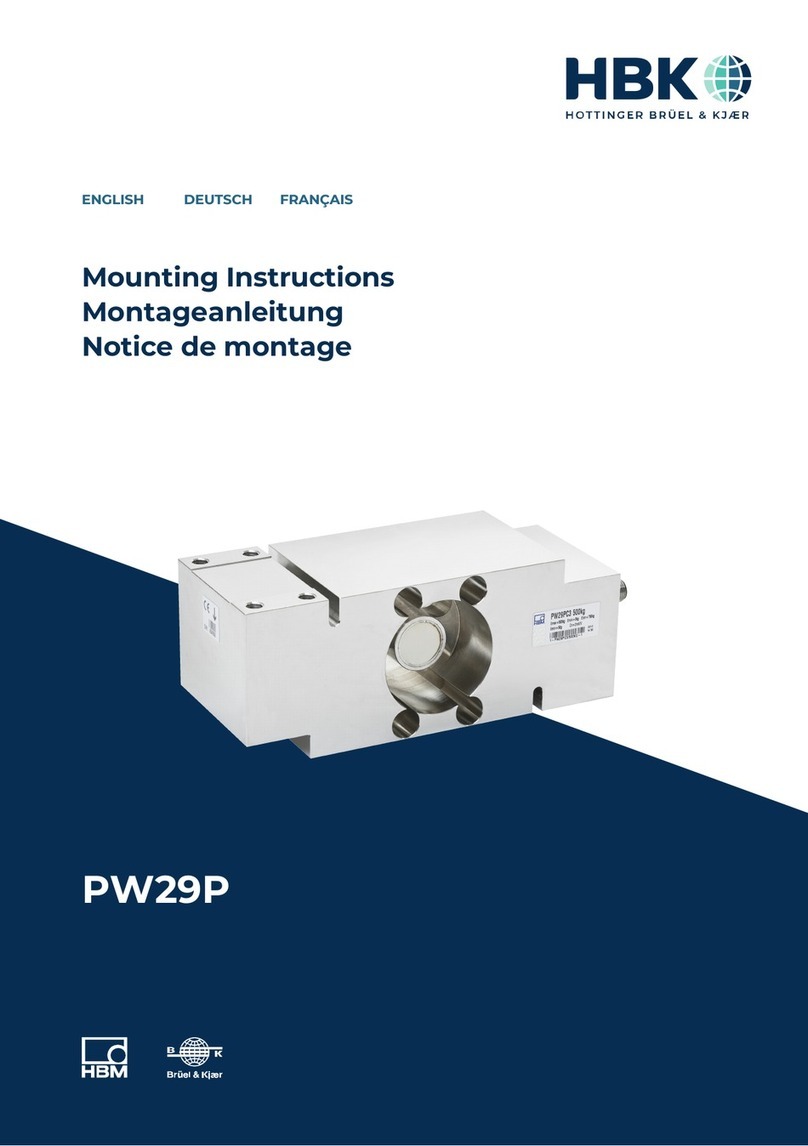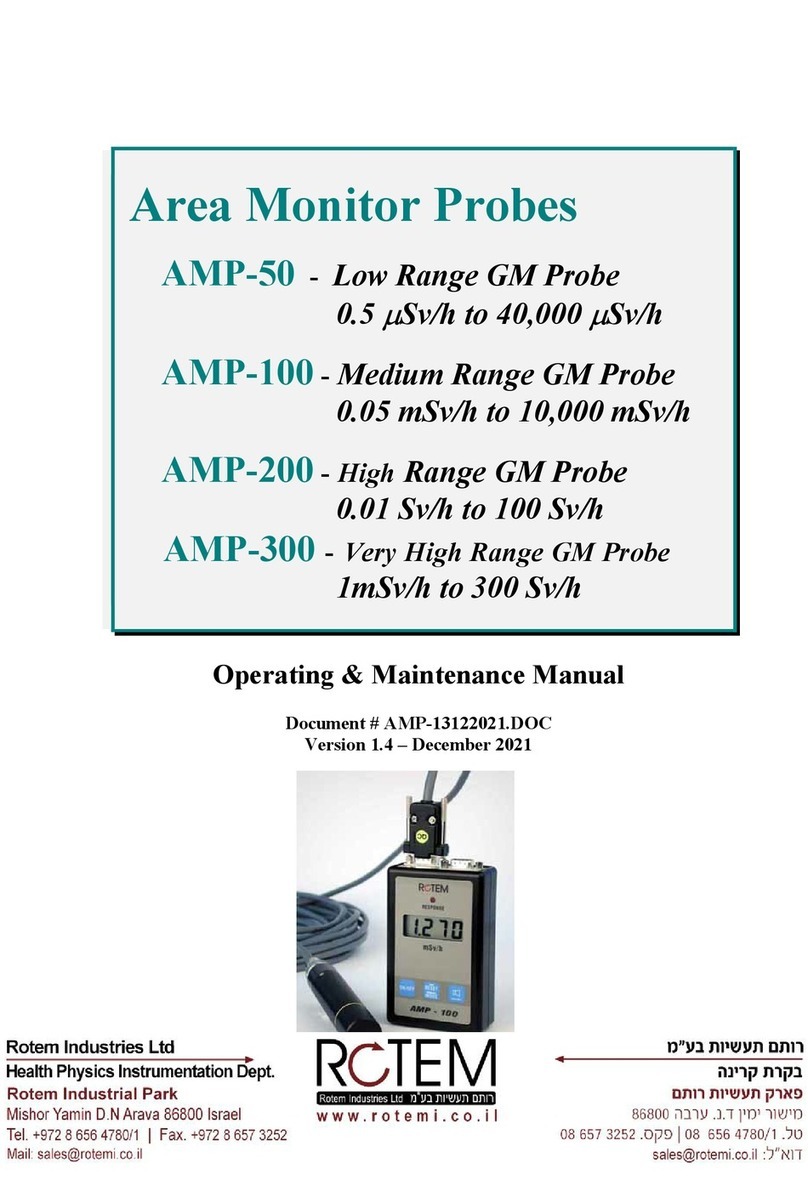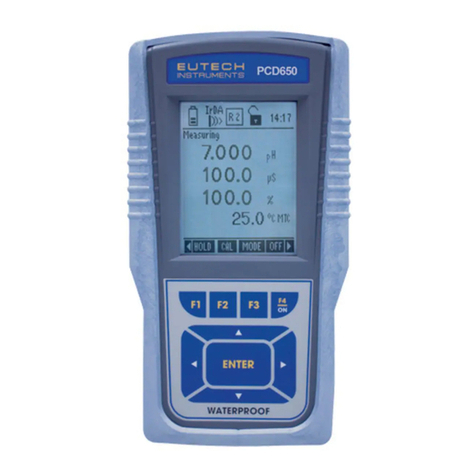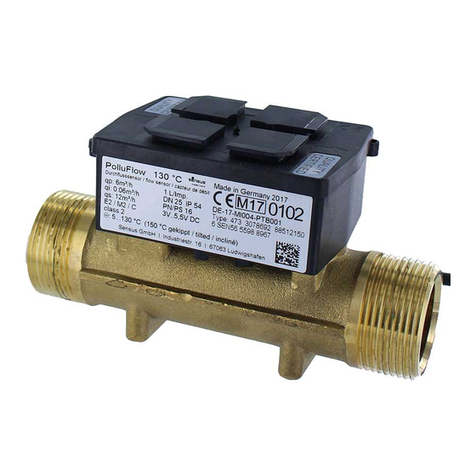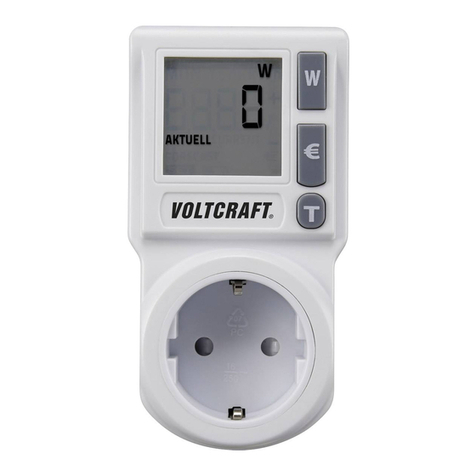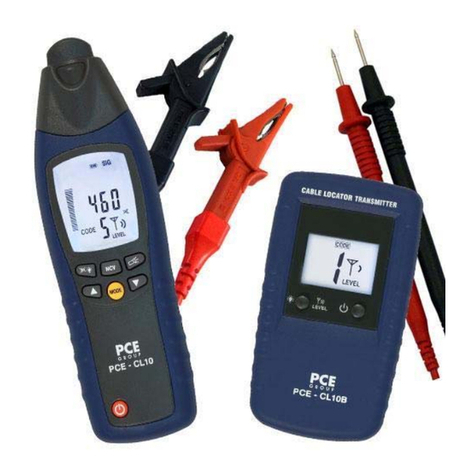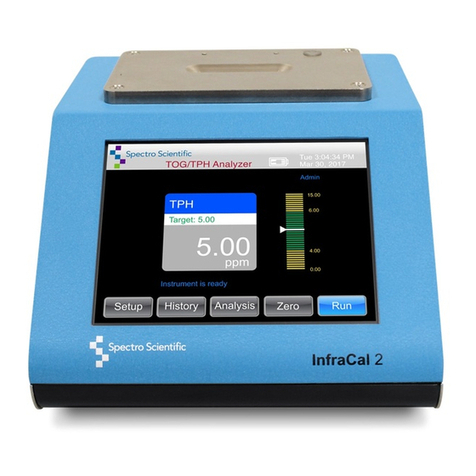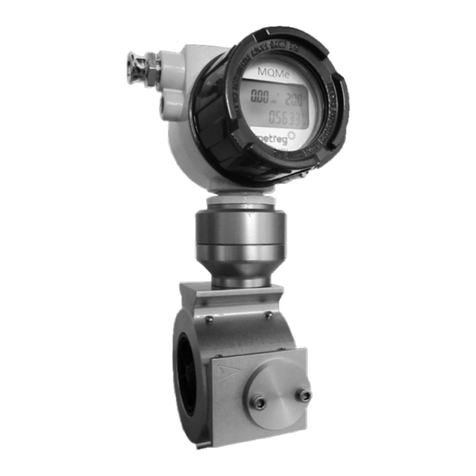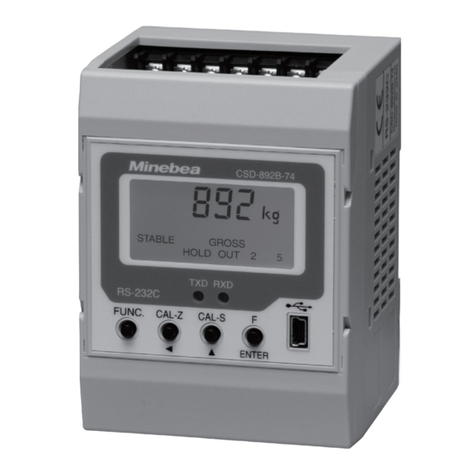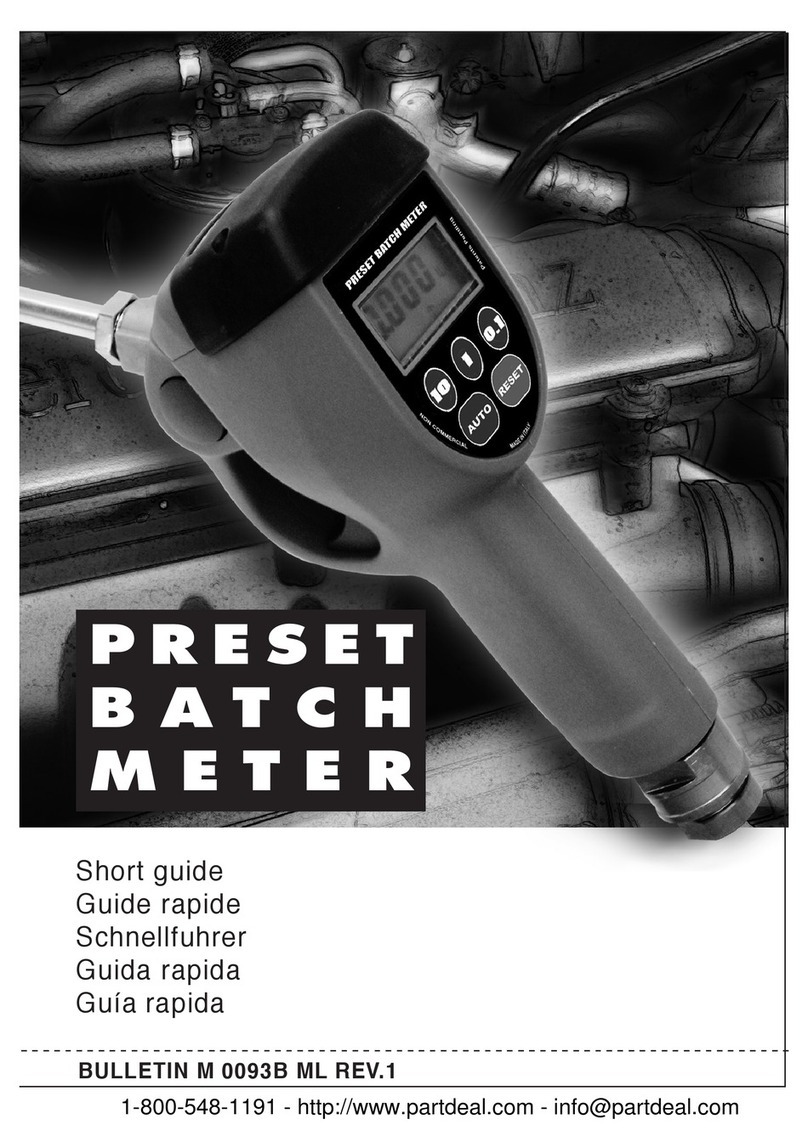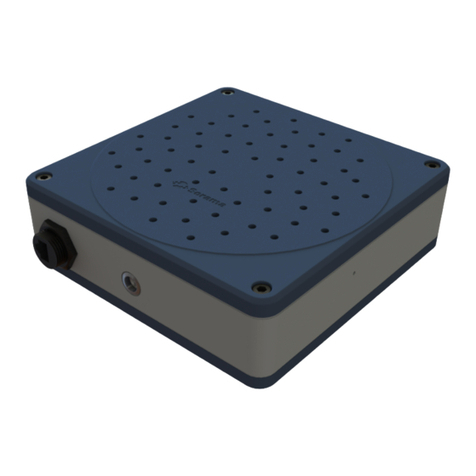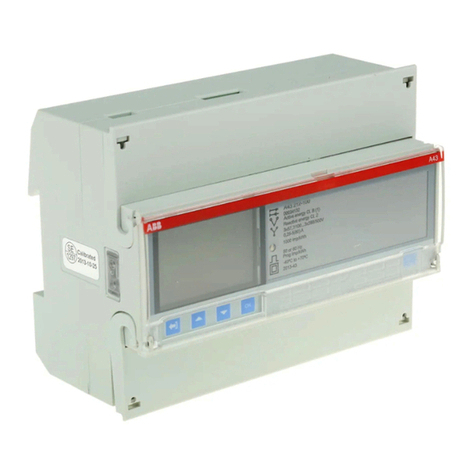HBK MP55 User manual

MP55, MP55DP
ENGLISH DEUTSCH
Operating Manual
Bedienungsanleitung

Hottinger Brüel & Kjaer GmbH
Im Tiefen See 45
D-64293 Darmstadt
Tel. +49 6151 803-0
Fax +49 6151 803-9100
www.hbkworld.com
Mat.:
DVS: A05959 01 X00 00
02.2023
EHottinger Brüel & Kjaer GmbH
Subject to modifications.
All product descriptions are for general information
only. They are not to be understood as a guarantee of
quality or durability.
Änderungen vorbehalten.
Alle Angaben beschreiben unsere Produkte in allge
meiner Form. Sie stellen keine Beschaffenheits- oder
Haltbarkeitsgarantie dar.

MP55, MP55DP
ENGLISH DEUTSCH
Operating Manual

MP55, MP55DP
TABLE OF CONTENTS
2
TABLE OF CONTENTS
1 Safety Instructions 4................................................
2 Markings used 8....................................................
2.1 Markings used in this document 8.....................................
2.2 Symbols on the device 8.............................................
3 Introduction 9......................................................
3.1 Scope of Supply and Accessories 9....................................
3.2 General 9..........................................................
4 Amplifier settings 10.................................................
5 Mounting/dismounting MP55 15.......................................
5.1 Interconnecting multiple modules 17....................................
6 Connection 18.......................................................
6.1 Overview of MP55/MP55DP functions 18................................
6.2 Supply voltage, control inputs/outputs and CAN interface 18................
6.2.1 External supply voltage for control outputs 20............................
6.3 PROFIBUS 20........................................................
6.4 Transducers 21......................................................
6.4.1 Connecting transducers in a four-wire configuration 22....................
6.4.2 Connecting transducers with cable lengths over 50 m 22...................
6.5 CAN interface 24.....................................................
6.6 PROFIBUS interface 25...............................................
6.7 Synchronization 25...................................................
7 Setting and operating (MP55) 27.......................................
7.1 Operating philosophy 27..............................................
7.2 Starting up 30.......................................................
7.3 Overview of all groups and parameters 32...............................
7.3.1 Setting all parameters 33..............................................
8 Explanation of the main parameters 37.................................
9 CAN interface description 47..........................................
9.1 General 47..........................................................
9.2 Cyclic transmission of measured values 47..............................
9.3 Parameterization 48..................................................

3
MP55, MP55DP
TABLE OF CONTENTS
9.4 Object dictionary:
Communication profile range in accordance with CANopen (CiA‐DS301) 50...
9.5 Object dictionary: Manufacturer-specific objects 54.......................
9.6 Manufacturer-specific objects in FLOAT data format 66....................
9.7 Examples 68........................................................
10 PROFIBUS interface description 71.....................................
10.1 Configuring and parameterizing 71.....................................
10.2 Parameterization 72..................................................
11 Error messages/operating state (LED) 75...............................
Index 79...................................................................

MP55, MP55DP
SAFETY INSTRUCTIONS
4
1 SAFETY INSTRUCTIONS
Before starting up, make sure that the mains voltage and type of current stated on the
type plate match the mains voltage and type of current at the place of operation, and that
the circuit being used is adequately protected.
As the device does not have its own power switch, the supply cable connected to it
must not be directly applied to the mains supply. The supply voltage must be 18 to
30 V. According to the VDE directive, these devices must be isolatable from the grid by
means of a switching device (e.g. a power switch). It is essential to ensure that the
device can be quickly disconnected from the mains supply at any time.
The supply connection and the signal and sensor cables must be installed in such a way
that electromagnetic interference does not impair the device functions (recommendation:
HBK "Greenline Shielding Design", download from http://www.hbm.com/Greenline).
Automation equipment and devices must be installed in such a way that adequate
protection and locking against unintentional actuation is provided (e.g. access controls,
password protection, etc.).
When devices are working in a network, the network must be configured in such a way
that malfunctions in individual nodes can be detected and shut down.
Safety precautions must be taken both in terms of hardware and software, so that a line
break or other interruption to signal transmission, such as via the bus interfaces, does not
cause undefined states or loss of data in the automation equipment.
Intended use
The MP55/MP55DP module with connected transducers is to be used exclusively for
measurement tasks and directly related control tasks. Use for any purpose other than the
above is deemed improper use.
In the interests of safety, the device may only be operated as described in the operating
manual. It is also essential to comply with the legal and safety requirements for the
relevant application during use. The same applies to the use of accessories.
Each time before starting up the equipment, you must first run a project planning and risk
analysis that takes into account all the safety aspects of automation technology. This
particularly relates to protection of personal and machinery.
Additional safety precautions to establish safe operating conditions in the event of a fault
must be taken in plants where malfunctions could cause major damage, loss of data or
even personal injury.
This can be done, for example, by error signaling, limit value switches, mechanical
interlocking, etc.

5
MP55, MP55DP
SAFETY INSTRUCTIONS
General risks in case of non-compliance with the safety instructions
The MP55/MP55DP module is a state-of-the-art unit, and as such is failsafe. The device
may pose residual dangers if it is installed or operated by untrained personnel.
Any person involved in setting up, starting up, operating or repairing the device must have
read and understood the operating manual and, in particular, the technical safety
instructions.
Conditions at the place of installation
Protect the devices from moisture, and weather conditions such as rain, snow, etc.
Do not expose the device to direct sunlight. Ensure that there is adequate ventilation.
Maintenance and cleaning
The MP55/MP55DP module is maintenance-free. Please note the following points when
cleaning the housing:
SBefore cleaning, disconnect the device from the power supply.
SClean the housing with a soft, slightly damp (not wet!) cloth. You should never use
solvents, as they could damage the labeling on the front panel and the display.
SWhen cleaning, ensure that no liquid gets into the device or connections.
Residual dangers
The scope of supply and performance of the MP55 covers only a small area of the
measurement technology field. In addition, planners, installers and operators should plan,
implement and manage the safety features of the test and measuring equipment in such
a way as to minimize residual dangers. Applicable regulations must be observed.
The residual dangers associated with test and measuring equipment must be indicated.
Working safely
Error messages may only be acknowledged and reset once the cause of the error is
removed and there is no further danger.
The device complies with the safety requirements of DIN EN 61010 Part 1
(VDE0411 Part 1).
The device must be mounted on a support rail connected to protective conductor
potential. Both the support rail and the MP55/MP55DP module must be free of paint,
varnish and dirt at the place of installation.

MP55, MP55DP
SAFETY INSTRUCTIONS
6
To ensure adequate interference immunity, the bus cables (CAN and, for MP55DP,
Profibus DP) must be shielded twisted pairs. The transducer cables must also be
shielded. To ensure adequate interference immunity, use only the Greenline shielding
design (place the shield of the transducer cable on the connector housing).
The cables used for the MP55/MP55DP digital inputs and outputs should not be longer
than 30 meters, and should not exit the building in which the system is located. Otherwise
it will not be possible to ensure that the device works without fault. Strong magnetic
fields or lightning strikes may destroy equipment.
When connecting cables (fitting and extracting terminals), measures must be taken to
prevent electrostatic discharge which could damage the electronics.
The MP55/MP55DP module must be operated with a separated extra-low voltage (18 to
30 V DC supply voltage), which usually supplies one or more consumers within a control
cabinet.
If the device is to be operated on a DC grid1), additional precautions must be taken for the
discharge of surge voltages.
Conversions and modifications
The MP55 module must not be modified in its design or safety features except with our
express consent. Any modification shall exclude any liability on our part for resulting
damage.
In particular, any repair or soldering on motherboards is prohibited. When exchanging
complete modules, use only genuine parts from HBM.
The device is shipped from the factory with a fixed hardware and software configuration.
Changes can only be made within the scope documented in the manuals.
Qualified personnel
This device is only to be installed and used by qualified personnel, strictly in accordance
with the specifications and with the safety rules and regulations which follow.
This includes people who meet at least one of the three following requirements:
SAs project personnel, you are familiar with the safety design features of the
automation equipment, and are accustomed to applying them.
SAs automation plant operating personnel, you have been instructed on how to use the
equipment. You are familiar with the operation of the equipment and technologies
described in this documentation.
SAs a commissioning or service engineer, you have successfully completed training in
the repair of automation plants. You are also authorized to operate, ground and mark
circuits and equipment in accordance with safety engineering standards.
1). Wider-reachingelectric power distribution system (e.g. across multiple control cabinets), possibly
also supplying consumers with high rated currents.

7
MP55, MP55DP
SAFETY INSTRUCTIONS
During use, compliance with the legal and safety requirements for the relevant
application is also essential. The same applies to the use of accessories.
Qualified personnel means persons entrusted with installing, mounting, starting up and
operating the product, who possess the appropriate qualifications for their work.

MP55, MP55DP
MARKINGS USED
8
2 MARKINGS USED
2.1 Markings used in this document
Important instructions for your safety are highlighted. Following these instructions is
essential in order to prevent accidents and damage to property.
Symbol Meaning
WARNING This marking warns of a potentially dangerous
situation in which failure to comply with safety
requirements could result in death or serious
physical injury.
CAUTION This marking warns of a potentially dangerous
situation in which failure to comply with safety
requirements could result in slight or moderate
physical injury.
Note This marking draws your attention to a situation in
which failure to comply with safety requirements
could lead to property damage.
Information This marking draws your attention to information
about the product or about handling the product.
Emphasis
See …
Italics are used to emphasize and highlight text and
identify references to sections of the manual,
diagrams, or external documents and files.
uThis symbol indicates an action step.
2.2 Symbols on the device
CE mark
With the CE mark, the manufacturer guarantees that the product
complies with the requirements of the relevant EC directives (the
Declaration of Conformity can be found on the HBK website
(www.hbm.com) under HBMdoc).
Statutory waste disposal marking
In accordance with national and local environmental protection
and material recovery and recycling regulations, end-of-life
devices that can no longer be used must be disposed of
separately, and not with normal household garbage.

9
MP55, MP55DP
INTRODUCTION
3 INTRODUCTION
3.1 Scope of Supply and Accessories
Scope of supply
S1 MP55/MP55DP module
S3 6-pin plug terminals, coded
Ordering no.: 3.3312-0427 (plug terminal 3);
3.3312-0428 (plug terminal 4); 3.3312-0426 (plug terminal 1)
S10-pin ribbon cable female connector
SAdditional spring for housing installation (included in pack)
S1 MP55 module operating manual
Accessories
S15-pin Sub-D plug for transducers, ordering no.: 3.3312‐0182
SStandard ribbon cable, 10-pin, 1.27 mm pitch
3.2 General
The MP55/MP55DP module from the PME product line is a carrier-frequency amplifier
suitable for connecting force transducers, pressure transducers, torque transducers,
displacement transducers and load cells in a wide variety of technologies. The MP55
module is set up and parameterized via a keyboard and display, or by using the PME
Assistant. The PME Assistant provides a simple user interface under MS-Windows for
parameterizing the modules (in the "PME Assistant" program help).
μP
AD
Intelligent signal
processing, e.g.
limit value switches
DA
Keyboard
and display
MP55
Carrier-frequency bridge
excitation voltage
Scalable analog output
Control inputs and
outputs
CANopen
interface
24 V
Electrically isolated
voltage supply
Profibus DP interface
(for MP55DP)
Fig. 3.1 Block diagram of the MP55/MP55DP module

MP55, MP55DP
AMPLIFIER SETTINGS
10
4 AMPLIFIER SETTINGS
Information
The DIP switches must be set/adjusted before mounting the PME.
Various settings are defined with DIP switches and can be read out via the display
(see section 7.3). These are the settings for:
Bridge excitation voltage, measuring range, bridge type, analog output,
synchronization, bus termination resistor, edge steepness
Set the DIP switches as shown in Fig. 4.1.
S1/S2
S5
S10
S11
S12
Unscrew
cover
1
2
Fig. 4.1 Opening housing, position of DIP switches
1 2 3456
Example:
means
ON
Fig. 4.2 Switch convention

11
MP55, MP55DP
AMPLIFIER SETTINGS
O
N
O
N
ON
Upper motherboard: S1 and S2
Lower motherboard: S10, S11 and S12
and S5
S10
S11
123456 1
23456
ON
123456
S10 S11 S12
ON ON
S2 S1
S12
123
ON
S5
1
2
3
5
4
6
1
2
3
5
4
6
1
2
3
5
4
6
ON ON ON
123456 123456
Synchronization Analog
output
Bridge type
Analog output
Bridge
excitation
voltage
123456 123456
ON ON
S2 S1
The switch positions
must not be changed!
Input
range
Bridge
excitation
voltage
Bridge
type
Input
range
Amplifier type
Factory settings
WARNING
123
Fig. 4.3 DIP switch factory settings

MP55, MP55DP
AMPLIFIER SETTINGS
12
S11
123456
ON
S1
S2 S1
S12
Bridge type1)
Full bridge
Half bridge
LVDT
123456
ON
S12
123456
ON
123456
ON
123456
ON
123456
ON
Input range5), 2)
123456
ON
123456
ON
3 mV/V
50 mV/V
123456
ON
123456
ON
123456
ON
123456
ON
500 mV/V
S5
S1
S1
S12
S12
S1 S11
S1 S11
S1 S11
123456
ON
S2
Bridge excitation voltage3)
5 V
2.5 V
1 V
123456
ON
S11
123456
ON
123456
ON
123456
ON
123456
ON
Analog output4)
123456
ON
S11
123
ON
S5
"10 V
"20 mA
123456
ON
123
ON
123456
ON
4-20 mA
V
mA
S2 S11
S2 S11
S5
S11
S11
Factory setting:
See Tab. 4.1
Switch pos. I
Switch pos. II
Switch pos. III
Fig. 4.4 Amplifier adjustment
1) View/check in display under TRANSDUCER group, "Transd.Type" parameter; see page 25
2) View/check in display under TRANSDUCER group, "Input" parameter; see page 25
3) View/check in display under TRANSDUCER group, "Bridge excitation" parameter; see page 25
4) View/check in display under ANALOG OUTPUT group, "Mode Vo" parameter; see page 25
5) mV/V values relate to 5VUB(see table Tab. 4.1 on next page)

13
MP55, MP55DP
AMPLIFIER SETTINGS
Synchronization
123456
ON
S10
123456
ON
Master
Slave
S10
S10
Fig. 4.5 Amplifier adjustment (continued)
Bus termination resistor
Toggle switch for termination
resistor (see also page 24)
ON OFF
S14
Fig. 4.6 Switch for CAN bus termination resistor (schematic diagram)
Bridge excitation
voltage (V)
Input range (mV/V)
Switch position ISwitch position II Switch position III
5 3 50 500
2.5 6 100 1000
1 15 250 2500
Tab. 4.1 Input ranges with different bridge excitation voltage

MP55, MP55DP
AMPLIFIER SETTINGS
14
Transducer type and nominal
(rated) data
Bridge type Bridge
excitation
voltage
Input range
Strain gage force transducer
2 mV/V=20 kN
Full bridge 5 V 3 mV/V
Inductive displacement transducer
80 mV/V
Half bridge 2.5 V 100 mV/V
Inductive displacement transducer
10 mV/V
Half bridge 1 V 15 mV/V
Piezoresistive transducer 400 mV/V Half bridge 1 V 250 mV/V
Potentiometric transducer
1000 mV/V
Half bridge 2.5 V 1000 mV/V
Tab. 4.2 Useful combinations

15
MP55, MP55DP
MOUNTING/DISMOUNTING MP55
5 MOUNTING/DISMOUNTING MP55
Fig. 5.1 Mounting on a support rail
Fig. 5.2 Dismounting

MP55, MP55DP
MOUNTING/DISMOUNTING MP55
16
CAUTION
The support rail must be connected to protective conductor potential .
Fig. 5.3 Installing a second spring for more stable mounting of the module on the
support rail

17
MP55, MP55DP
MOUNTING/DISMOUNTING MP55
5.1 Interconnecting multiple modules
1.
2.
3.
Color coding
on pin 1
Ribbon cable female connector
58 mm
Recommended gap
for ribbon cable
female connectors
Subsequent devices are
interconnected via this
connector.
Fig. 5.4 Connecting a ribbon cable
Multiple MP55 modules can be interconnected by a ribbon cable. This cable provides the
local supply voltage connection and synchronization between the modules. No more than
eight modules should be interconnected via a flat ribbon cable.

MP55, MP55DP
CONNECTION
18
6 CONNECTION
WARNING
Comply with the safety instructions before starting up the device.
6.1 Overview of MP55/MP55DP functions
Plug terminal 1:
Power supply and CAN bus, synchronization
Transducer connection (15-pin Sub‐D plug)
including transducer excitation voltage
Plug terminal 3:
Electrically isolated control inputs
(24 V level), analog output
Pressure-sensitive control keys
2-row LCD display
Plug terminal 2: (same assignment as
plug terminal 1)
CAN adapter for PC/laptop connection,
parameterization via CAN bus
Plug terminal 4:
Electrically isolated control outputs (24 V
level), external control output power supply
LED
Local connection of CAN bus and supply
voltage, and synchronization between
modules, bus termination resistor
PROFIBUS connector socket (MP55DP only)
6.2 Supply voltage, control inputs/outputs and CAN interface
There are four removable plug terminals available for connection.
This manual suits for next models
1
Table of contents
Languages:
Other HBK Measuring Instrument manuals
Popular Measuring Instrument manuals by other brands
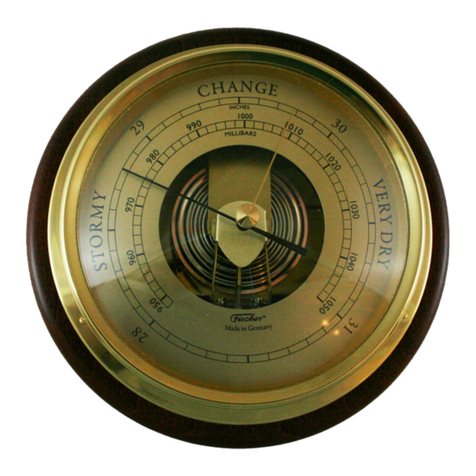
Ambient Weather
Ambient Weather Fischer 1434B-22-B user manual
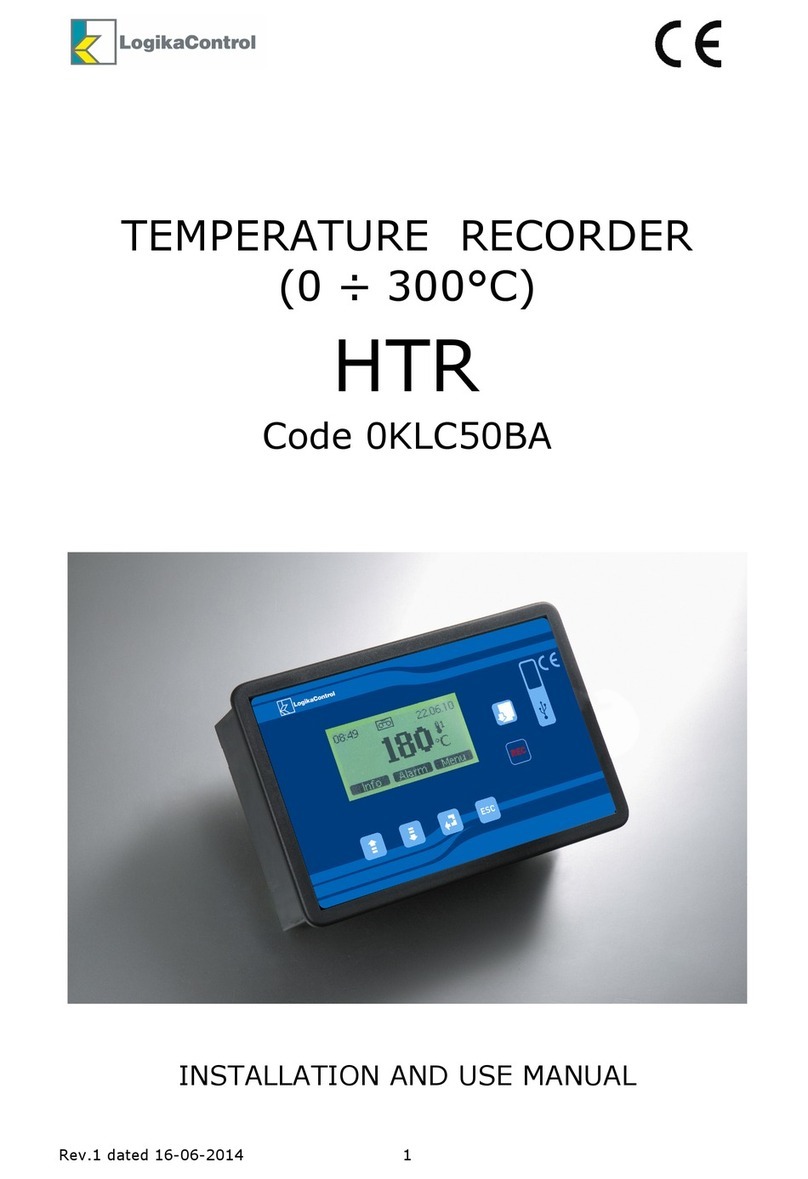
LogikaControl
LogikaControl HTR Installation and use manual
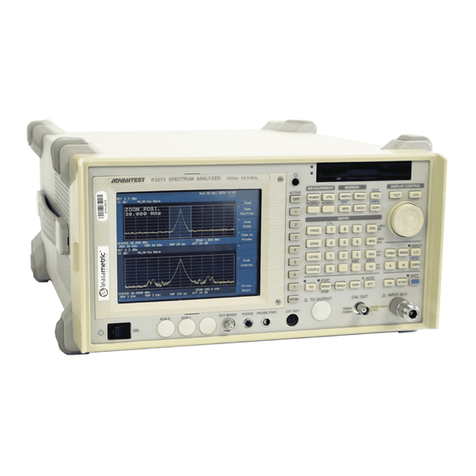
ADVANTEST
ADVANTEST R3267 series Operation manual
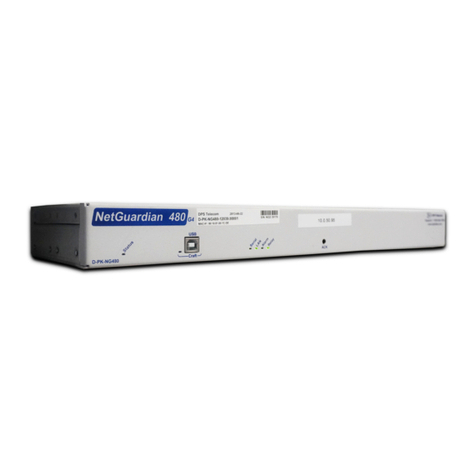
DPS Telecom
DPS Telecom NetGuardian 480 Techno Knowledge Paper
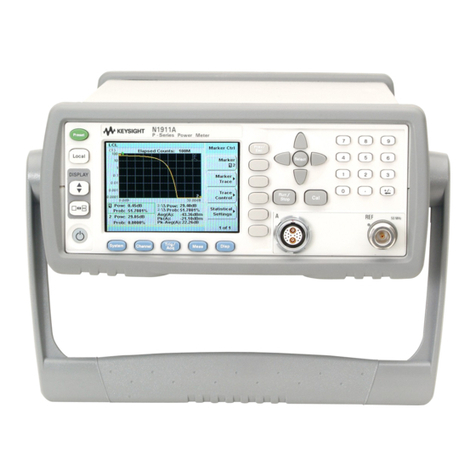
Keysight
Keysight N1911A Programming guide

PURE
PURE Avalon 300R Connect manual
